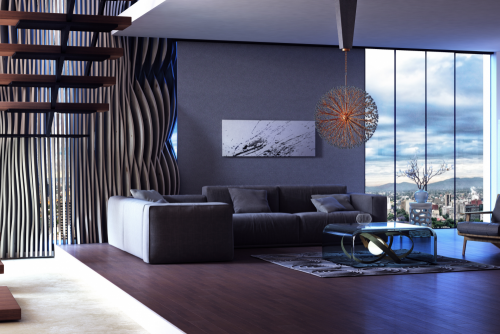5 Tips When Painting A Wall
The right shade of paint can give a level of character to your rooms, that even decor cannot achieve. It will set the mood for other rooms too, purely in contrast. Interior painting is easier than exterior painting, but don’t let it fool you, it comes with it’s own unique challenges. One of them being, how lighting will have a secondary effect on the room’s image. The color of your decor items, and the general flavor of the items like sofa pillows and throws, as well as area rugs will also change the way the walls look. So how do you start and what things do you need to do to make a room look fabulous?

1. Smooth surfaces
First things first, you need to sand down any imperfections on the walls. Any little bumps will project a small but noticeable shadow as the light hits the wall from different angles. As some of the top painting contractors San Diego will tell you, to apply a smooth coat of paint both on the walls and the ceiling, you must first smooth any bumps or peaks that seem unnatural. The sanding can be done with the lightest touch so you don’t cause an indent in the wall which creates a well effect, making it very prominent to the onlooker. You should also flatten any ridges on the corners of walls, which is why sometimes, dirt, debris and flick of paint from the old coat can pile up. If you use fine-grit sandpaper, you will have a much flatter surface which the new paint can easily latch onto with minimal dripping.
2. Use good equipment
We’re not quite ready to paint yet. As interior painters San Diego would advise, always use good equipment. This means, buying some fantastic brushes that are soft, but firm and allow for fine effortless brush strokes. Painting is not a simple matter of up and down, or side to side. Painting a wall requires you to make multiple different types of brush strokes, some which will be delicate, some strong and others will be somewhere in the middle. So buy real horse hair brushes and avoid synthetic brushes if you can.
Use a good roller that can evenly spread the paint it absorbs. Make sure that you have finer or thinner brushes too, so you can do fine detailing towards the skirting board and or around door and window frames.
3. Covering up
Using paper tape, cover some of the areas which will be close to the painting being done, but are not in your sights for painting over. This could be door frames, skirting boards, window sills and frames, as well as the adjacent walls if you are going for a two-toned style.
Cover the floor with newspaper, sellotaping each sheet down so it doesn’t kick up if it sticks to your shoes as you walk across it. The house painters San Diego recommend that you take your time to do all of this. You don’t want to get paint on your carpet or any other surface that will then require, sanding and repainting.
Cover all the furniture with an industrial tarp. This is a nice thick material, which will prevent dust from piling up and is very hard to rip or puncture. With many tools lying around, this is so important because a thin plastic sheet is not the best protection for your expensive decor items.
4. Ready, steady, prime!
The very first thing you need to do now, in terms of actually painting the wall, is to add primer. A primer is essentially an undercoat, which allows your main paint to latch onto. The primer will also provide a true smooth layer for the paint to apply to so you will avoid any small bumps which you have missed to make an impact. It will also allow you to paint on a consistent layer of paint. Why is this important?
The paint will be absorbed into the wall, in different depths. A nude wall will allow the paint to sink into it and this can create patches of dark and light shades. So, a primer is giving the paint a chance to sit on the surface evenly.
5. The art of the brush stroke
Some of the best painters in the world have been idolized just because of their brush technique. Now you aren’t trying to imitate Monet or Rembrandt, it’s just a wall after all. But, when you have an excellent brush technique, you don’t leave any brush marks on the walls. No zig-zagging or overlapping patterns emerge. Even if you don’t see the while looking 90-degrees at the wall, from another angle you could well see what look like scratches in the wall. If you are painting a wall in the hallway or foyer area, everytime you enter the home, you may be able to see them briefly as the light hits the wall just right. This can drive you mad over time, so we recommend using these techniques.
- As well-known interior painting san diego professionals, we recommend committing to each brush stroke. Do not stop halfway, make one smooth stroke fully extending your arm.
- Don’t overload your brush, this can cause dripping and uneven shades to be spread around the walls; and you’ll run out sooner!
- Let the brush do the work. Don’t force the paint onto the wall, just allow the brush to dispense the paint in good time. It’s much like shaving, the more you press on your skin the more cuts and scrapes you’ll manage to produce. A light pressure, with confidence in the tool you’re using.
- Use the right brush for the right job. When you need to cover a large area, use a wide thick brush, but change it for a slimmer brush around tighter spots. Don’t simply turn the brush laterally to use the slimmer side. A smaller brush is lighter and easy to be precise when using.
If you would like more tips on painting walls, feel free to ask us any questions. This is our bread and butter and we’d love to start a conversation with you and talk about your needs.

